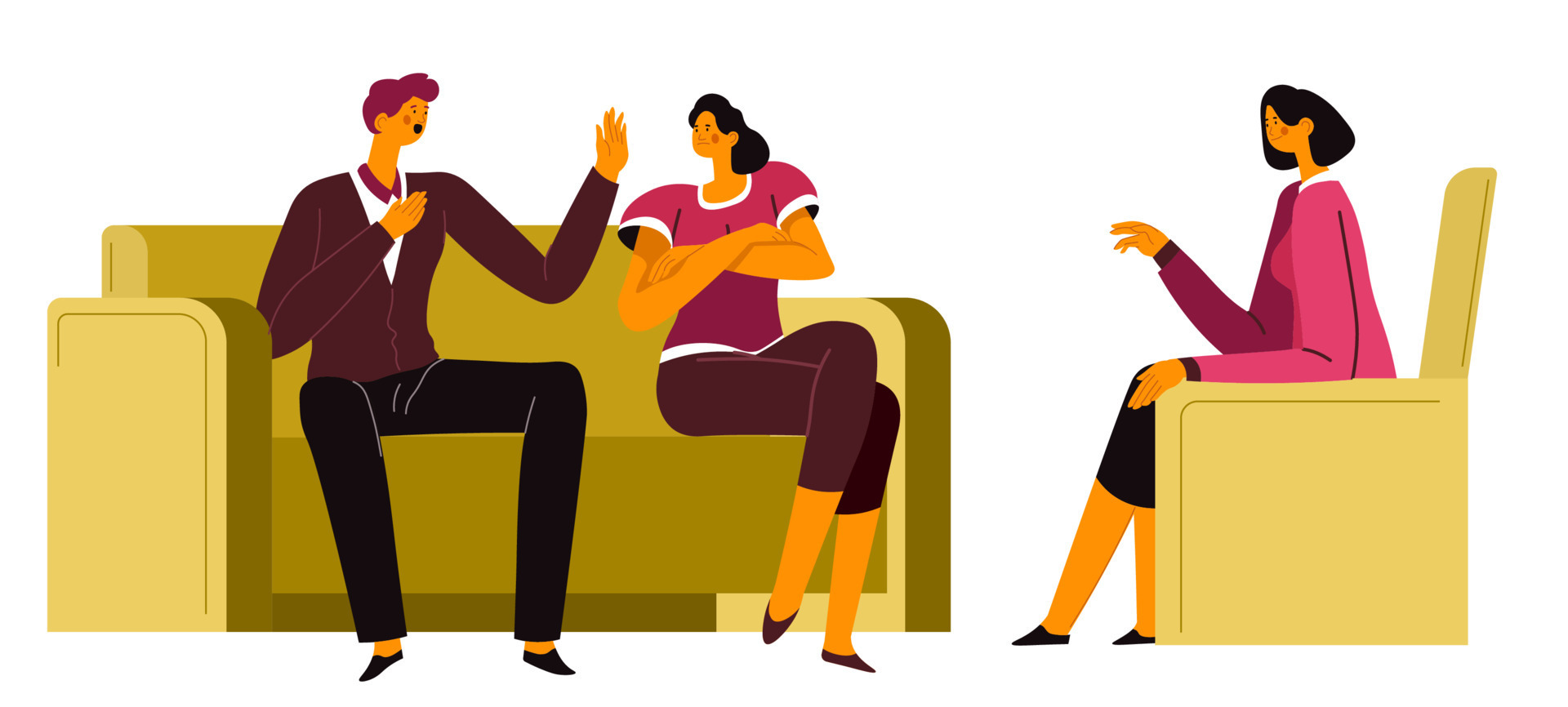Career Tips
Steps On How To Become A Marriage And Family Therapist

A licensed marital and family therapist, abbreviated as LMFT or MFT, works with individuals, couples, and families to address harmful habits and situations that create personal distress and relational difficulties. If you love assisting individuals in improving their lives and developing healthy relationships, a career in marital and family therapy may be right for you. Learning about LMFTs and what you can do to pursue this career might help you decide if it’s a good fit for you.
What is marriage and family therapy?
Marriage and family therapy views connections as critical to understanding and treating a patient’s illness. These therapists provide help to families, married couples, and people of all ages as they face life’s obstacles.
MFTs deal with a wide range of situations, from major life upheavals like death or unemployment to long-term issues like financial problems or parental strife. Many families seek therapy to reconcile unpleasant emotions, address work disappointments, or discuss household responsibilities such as caring for children or aging parents.
A marital and family therapist diagnoses and treats mental and emotional illnesses by encouraging patients to discuss their experiences. Through psychotherapy and other tactics, the therapist determines what has harmed the patient’s well-being and how they might collaborate to restore it.
An MFT may work with a psychiatrist as part of a therapy plan if they feel medication may benefit the patient’s condition. MFT is a short-term solution-focused approach that requires an average of 12 sessions per family. The therapist collaborates with the individual or family members to establish quantifiable objectives for their interactions.
How to become a family and marriage therapist
Here are six typical steps you can follow to become a licensed marriage and family therapist:
1. Earn a bachelor’s degree
The first step in becoming an LFMT is obtaining a bachelor’s degree. Studying psychology, sociology, social work, or another comparable discipline in the social sciences and humanities can prepare you for professional-level education in these subjects. A standard bachelor’s degree requires four years of full-time study to accomplish.
If you are an undergraduate student interested in becoming an LFMT, keep in mind that most experts in this sector require a master’s degree or above to practice. Some master’s programs prefer individuals with a background in psychology or social sciences, although most accept students with undergraduate degrees in other fields.
Consider studying master’s programs while still an undergraduate to learn about the qualifications so you may take coursework that will assist you get into your desired program. As an undergraduate student, you may want to emphasize the following courses:
- Research methods
- Statistics
- Human development
- Psychology
- Family studies
2. Earn a master’s degree
A master’s degree is required to practice family and marital therapy. A professional degree enables you to master the skills required to perform diagnostic evaluations and develop treatment strategies for individuals with mental health disorders.
Graduate programs in psychology and counseling often include a wide range of specializations, such as research, family counseling, social work, drug use therapy, and aging and development. Because many schools specialize or emphasize a certain area, it is critical to select a program that focuses on family and marital therapy.
A normal master’s degree in family and marital counseling requires two years of full-time study to finish. Throughout the program, students attend classroom courses as well as practical clinical training.
Depending on the curriculum, you may also be involved in research or conduct your own research project. When searching for a program, choose an approved university. Here are several accreditations to consider while selecting a school.
- Master’s in Psychology and Counseling Accreditation Council (MPCAC)
- Commission on Accreditation for Marriage and Family Therapy Education (COAMFTE)
- Council for Accreditation of Counseling and Related Educational Programs (CACREP)
3. Complete clinical hours
Your state specifies the amount of clinical hours you must complete as part of your license requirements. Some states demand 1,000 hours, others 3,000. Your clinical experience allows you to apply what you’ve studied while under the supervision of a credentialed practitioner. You can select any venue that provides mental, emotional, or behavioral health services, such as private offices, colleges, charities, and nonprofit organizations.
4. Pass a state licensing exam
Every state requires licensed marriage and family therapists to pass one of two exams: the National Clinical Mental Health Counseling Examination (NCMHCE) or the Marriage & Family Therapist (MFT) National Exam managed by the Association of Marital & Family Therapy Regulatory Boards (AMFTRB).
Your state may allow you to choose which exam you take, but check these requirements and any others before you prepare. States vary in licensure programs, and they may change their requirements over time.
5. Choose a work environment
During your classroom or clinical experience, you may determine where you want to start your career in marital and family therapy. Some choices include working in a hospital or treatment facility, a private practice, in-home care, or telemedicine.
When picking a setting, think about which clinical groups you are most interested in counseling. Some LMFTs, for example, may prefer to work with families, whilst others prefer individual clients. You may also like to deal with certain age groups, such as teenagers or adults.
6. Continue your education
The final stage toward becoming a certified marital and family therapist is continuing. To renew your license yearly or biennially, you must complete a specific amount of continuing education credits provided by the state.
Your state selects which activities meet this criteria, such as online courses, seminars, or supervising others in a clinical environment. These credits provide a chance to hone your skills and advance the industry by educating future clinicians. Continuing education is essential for remaining current with clinical best practices.
FAQS
- Are LMFTs able to diagnose mental health conditions?
Licensed marriage and family therapists can diagnose and treat mental, emotional and behavioral conditions through individual, child and adult psychotherapy. They also provide couple, family and group therapy services. These professionals become qualified to diagnose mental health conditions after earning a master’s degree and completing their licensure. Having a professional degree equips them with skills in psychological assessment, which involves learning how to use diagnostic tools to make accurate evaluations.
- How does a therapist differ from a psychologist and a psychiatrist?
Therapists, psychologists and psychiatrists are different professions with the same goal of helping people improve their mental, emotional and behavioral health. Both psychologists and therapists are similar in how they practice clinical work. After completing a master’s degree and a significant number of supervised clinical hours, a licensed therapist can diagnose and treat patients.
A psychologist has a doctorate in psychology and may conduct research or offer treatment in a clinical environment. Neither therapists nor psychologists can recommend or prescribe medication.
Psychiatrists are considered medical doctors, as they have completed a medical degree and a four-year residency in psychiatry before practicing. They can prescribe medication and may focus on chemical imbalances in the brain. In addition to prescribing psychiatric medications, they can provide counseling and therapy services like a therapist or psychologist. Some psychiatrists may also work in research or professional consultation roles.
- What is the average salary for family and marriage therapists?
The average salary for a family therapist is $66,647 per year. This salary average can vary based on your geographic location, setting of employment, level of education, years of experience and area of specialty or subspecialty. For example, a recent graduate who works for a small family practice may earn less than an experienced professional who owns a clinic. Additionally, LFMT can earn more by pursuing specialty certifications, such as in pediatric counseling.
- What is the job outlook for family and marriage therapists?
Currently, the United States Bureau of Labor Statistics projects employment for marriage and family therapists to grow 14% between 2021 and 2031. This growth may reflect the wider social acceptance of mental health treatment and an increase in integrated care services, which consider both physical and mental health treatments for individuals. As more patients seek mental health services, the demand for qualified professionals is likely to increase.
- What are some common skills of a marriage and family therapist?
Families are complex units and require compassionate guidance when working through challenges. Marriage and family therapists often use a combination of soft skills and technical skills when providing care for their clients. Here are some important skills for LMFTs:
- Boundaries: Therapists can set and maintain boundaries with the individuals they assist in treatment to deliver ethical therapy. This means that therapists know how to establish and maintain professional relationships with their clients.
- Communication: Therapists use communication skills to provide feedback or suggestions to their clients. They listen actively to understand the needs and concerns of their clients and provide clear, actionable feedback to support clients and encourage them through challenges.
- Empathy: Empathy is the ability to understand and identify with somebody else’s situation. Empathy is an important skill in therapy because therapists try to understand a client’s feelings so they can offer support.
- Active listening: Active listening skills give therapists the ability to effectively and thoroughly listen to clients’ problems. Practicing active listening involves minimizing distractions, showing interest through verbal and non-verbal cues and summarizing the speaker’s words to show understanding.
- Critical thinking: Therapists use critical thinking strategies to offer solutions to problems by replacing old habits with new methods. Critical thinking involves identifying problems, assessing their causes and brainstorming solutions.












